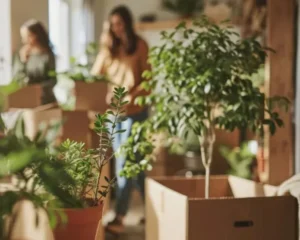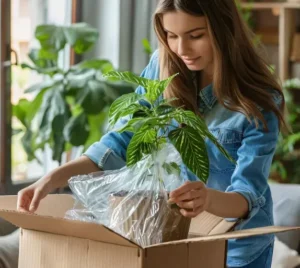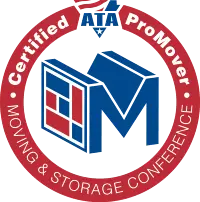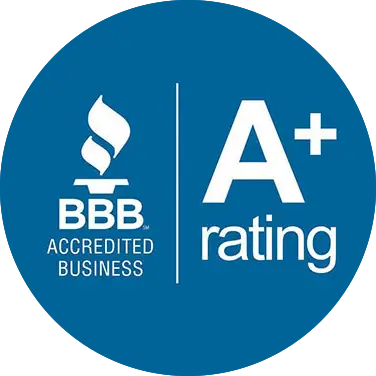The Ultimate Checklist for Moving with Indoor Plants: Expert Tips from Harbor Moving
Moving to a new home can be an exciting adventure, but it often comes with its fair share of challenges—especially if you’re a plant parent. Your indoor plants aren’t just decor; they’re living companions that require special care during a relocation. At Harbor Moving, we understand the importance of ensuring your green friends arrive safely and thrive in your new space. Whether you’re moving across town or across the country, this comprehensive checklist will guide you through the process step by step. We’ve drawn from our years of experience in professional moving services to provide detailed, practical advice to minimize stress for both you and your plants.

Preparation Before the Move: Get Your Plants Ready
The key to a successful move with plants starts well before packing day. Proper preparation helps your plants withstand the journey and reduces the risk of damage or shock.
- Assess Your Plant Collection (2-4 Weeks Before): Take inventory of all your indoor plants. Note their sizes, types (e.g., succulents, ferns, or large fiddle-leaf figs), and specific needs like light and water requirements. Decide if any plants are too fragile or large to move—consider gifting them, selling them, or propagating cuttings instead. For long-distance moves, check state or international regulations on transporting plants to avoid issues with pests or invasive species.
- Prune and Treat for Pests (1-2 Weeks Before): Trim dead leaves, stems, or overgrown branches to make plants more compact and easier to pack. Inspect for pests like aphids or spider mites and treat them with natural remedies or insecticidal soap. Avoid chemical pesticides close to moving day, as residues can harm plants in enclosed spaces.
- Repot if Necessary (1-2 Weeks Before): If pots are cracked or too heavy (like ceramic ones), transfer plants to lightweight plastic pots. Use fresh, well-draining soil to give them a nutrient boost. This also prevents soil from spilling during transit.
- Adjust Watering and Feeding Schedule (1 Week Before): Gradually reduce watering to let the soil dry out slightly—this makes pots lighter and reduces the risk of mold or root rot during the move. Stop fertilizing at least two weeks prior to avoid new growth that’s vulnerable to stress.
- Gather Supplies (1 Week Before): Stock up on moving essentials tailored for plants: sturdy boxes (taller than the plants), packing paper, bubble wrap, plastic bags for soil containment, stakes for support, and labels. If hiring professionals like Harbor Moving, inquire about our specialized plant-moving crates.

Packing Your Plants: Secure and Protect
Packing is where most plant damage occurs, so take your time and handle with care. Aim to pack plants last, ideally on moving day, to minimize time in boxes.
- Wrap and Stabilize (Day Of or Night Before): For tall plants, gently tie up leaves with soft twine to prevent breakage. Wrap the base of the pot in plastic bags to contain soil spills. Use bubble wrap or newspaper to cushion delicate foliage, but ensure air circulation to avoid suffocation.
- Box Them Up: Place smaller plants in boxes with dividers or crumpled paper for stability. For larger plants, use open-top boxes or wrap them in moving blankets. Poke holes in boxes for ventilation if they’ll be sealed for more than a few hours. Label boxes as “Fragile: Live Plants” and indicate which side is up.
- Handle Special Cases: Succulents and cacti need extra padding to protect spines—use foam or cardboard sleeves. Hanging plants should be removed from hooks and packed flat or in specialized carriers. Aquatic plants like those in terrariums require draining excess water and securing lids.
- Temperature Considerations: If moving in extreme weather, insulate boxes with blankets. Avoid packing plants in the trunk of a car where temperatures can fluctuate wildly.
During the Move: Transport with Care
The journey itself can be tough on plants, so prioritize their comfort.
- Load Last, Unload First: Place plants in the moving vehicle last so they’re the first out at your destination. This minimizes time in transit.
- Choose the Right Transport Method: For short moves, transport plants in your personal vehicle where you can control the environment. For long hauls, use climate-controlled trucks if possible. At Harbor Moving, our fleet includes options for temperature-sensitive items like plants.
- Monitor Conditions: Keep plants away from direct sunlight, heaters, or air vents. If driving, stop periodically to check on them and mist if needed. For air travel, note that most airlines prohibit plants in checked luggage—carry them on if allowed, or ship via specialized services.
- Avoid Overnight Stays in Vehicles: If the move spans days, bring plants indoors at night to protect from cold or heat.
After the Move: Help Your Plants Settle In
Once you’ve arrived, quick action helps your plants recover from the stress of relocation.
- Unpack Immediately: Remove plants from boxes as soon as possible and place them in a shaded, draft-free area. Inspect for any damage and remove wrappings gently.
- Rehydrate and Acclimate (First 24-48 Hours): Water thoroughly but avoid overwatering. Mist leaves to restore humidity. Keep them out of direct sun for a few days to prevent shock.
- Find the Right Spots (1-2 Days After): Recreate their original lighting conditions in the new home. Rotate plants if needed to adjust to new light sources.
- Monitor for Stress (First Few Weeks): Watch for signs like yellowing leaves or wilting. Provide extra care, such as humidity trays for tropical plants. If issues persist, consult a local nursery.
- Resume Normal Care: After a week or two, return to your regular watering and feeding routine. Consider a gentle fertilizer to aid recovery.
By following this checklist, you’ll give your indoor plants the best chance to flourish in your new home. At Harbor Moving, we’re here to make your entire move seamless—including handling your precious plants with the utmost care. Contact us today for a free quote and let our experts take the hassle out of your relocation!








